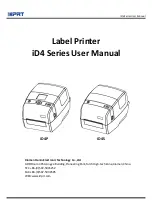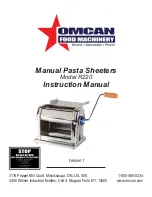
1/12
45
Compressor Electrical Diagnostics
THE COMPRESSOR DOES NOT START OR WILL
TRIP REPEATEDLY ON OVERLOAD.
Check Resistance (Ohm) Values
Compressor windings can have very low ohm values.
Use a properly calibrated meter.
Perform the resistance test after the compressor cools.
The compressor dome should be cool enough to touch
(below 120°F/49°C) to assure that the overload is
closed and the resistance readings will be accurate.
Single Phase Compressors
Disconnect power then remove the wires from the
compressor terminals.
The resistance values between C and S and between
C and R, when added together, should equal the
resistance value between S and R.
If the overload is open, there will be a resistance
reading between S and R, and open readings between
C and S and between C and R. Allow the compressor to
cool, then check the readings again.
Check Motor Windings to Ground
Check continuity between all three terminals and the
compressor shell or copper refrigeration line. Scrape
metal surface to get good contact. If continuity is
present, the compressor windings are grounded and the
compressor should be replaced.
COMPRESSOR DRAWING LOCKED ROTOR
To determine if the compressor is seized, check the
amp draw while the compressor is trying to start.
The two likely causes of this are a defective starting
component and a mechanically seized compressor.
To determine which you have:
Install high and low side gauges.
Try to start the compressor.
Watch the pressures closely.
If the pressures do not move, the compressor is seized.
Replace the compressor.
If the pressures move, the compressor is turning slowly
and is not seized. Check the capacitors and relay.
Compressor Drawing High Amps
The continuous amperage draw on start-up should not
be near the maximum fuse size indicated on the serial
tag.
DIAGNOSING CAPACITORS
If the compressor attempts to start, or hums and trips
the overload protector, check the starting components
before replacing the compressor.
Visual evidence of capacitor failure can include a bulged
terminal end or a ruptured membrane. Do not assume a
capacitor is good if no visual evidence is present.
A good test is to install a known good substitute
capacitor.
Use a capacitor tester when checking a suspect
capacitor. Clip the bleed resistor off the capacitor
terminals before testing.
DIAGNOSING START COMPONENTS
If the compressor attempts to start, or hums and trips
the overload protector, check the start components
before replacing the compressor.
Capacitor
Visual evidence of capacitor failure can include a bulged
terminal end or a ruptured membrane. Do not assume
a capacitor is good if no visual evidence is present. A
good test is to install a known good substitute capacitor.
Use a capacitor tester when checking a suspect
capacitor. Clip the bleed resistor off the capacitor
terminals before testing.
Relay
The relay has a set of contacts that connect and
disconnect the start capacitor from the compressor start
winding. The contacts on the relay are normally open.
The relay senses the voltage generated by the start
winding and closes and then opens the contacts as the
compressor motor starts. The contact remain open until
the compressor is de-energized.
Summary of Contents for Multiplex Ms-8
Page 59: ...1 12 59 Blender Scale Schematic Shaver Schematic ...
Page 62: ...62 1 12 Notes ...
Page 63: ...1 12 63 Notes ...
















































